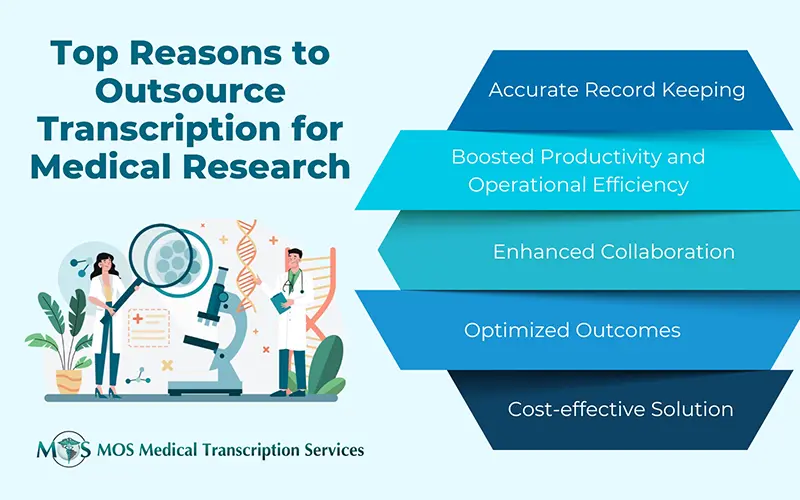
Efficient and timely medical transcription services allow physicians to focus on care and ensure precise patient scheduling, among other things. However, missed appointments or patient no-shows are a major concern in primary care settings and across different medical specialties in the U.S. A patient no-show is defined as a scheduled appointment that the patient neither uses nor cancels. A study published in Laryngoscope in March 2018 reported an overall no-show rate of 20% for 22,759 scheduled clinic visits at a single academic Otolaryngology department. Other studies have found that the rates of no-shows in primary care setting in the U.S. ranged from 5% to 55%, according to research published in the Journal of Family Medicine and Disease Prevention in 2018.
Consequences of missed appointments
When patients don’t show up for their appointments, it creates administrative and financial problems for practices. Physicians lose their valuable time. The whole practice is put behind schedule and staff is left struggling to adjust the rest of the day. An appointment that is not canceled on time prevents the practice from reassigning the slot to another patient. One study found that an unused time slot cost individual physicians an average of $200 (www.forbes.com). Medbridge Transport reported that a practice with multiple physicians can have 14,000 unfilled time slots each year, and that patient no-shows cost the healthcare industry $150 billion annually.
Missed appointments are also detrimental to patients’ health. Missing appointments interrupts continuity of care, monitoring of medication efficacy, and timely delivery of preventive services and screenings. When a patient with an acute illness does not show up, the condition could get worse and progress to chronic with complications.
Why do patients miss appointments?
The common reasons why patients don’t show up are as follows:
- Costs: High costs of care can be a deterrent to keeping medical appointments. In 2012, up to 49 million adult patients skipped recommended care for financial reasons (www.qminder.com).
- Transportation issues: According to a Medbridge Transport whitepaper, about 3.6 million U.S. patients missed their appointments because of transportation problems. Transportation was found to be the reason why patients missed an appointment 67 percent of the time. For older adults, transportation issues rank third among the barriers to accessing health services.
- Long wait times
- Forgetting the appointment
- Being called to work unexpectedly
- Not being able to reach the practice to leave a voicemail or cancel
- Poor medical literacy – patients are unaware that keeping appointments is important for their health
- Lack of understanding of the appointment scheduling system
- language barriers
- emotions – fear and anxiety about procedures and bad news
Strategies for reducing no-shows
The Medbridge Transport study reported that medical practices that proactively work towards minimizing no-shows can reduce no-shows by up to 70 percent. Here are seven strategies to address the problem of missed healthcare appointments:
- Assign a dedicated staff member to manage scheduling: Rather than have several staff members involved in patient appointment scheduling, practices should have a single person to manage this. This will ensure better management of the physician’s time.
- Set up an effective reminder system: Many practices have automated patient reminder e-mails and/or text messages. Sending reminders at the right time is important to get a response. Best practice is to send the first reminder three weeks before the appointment, the second reminder three days before the appointment, and the final reminder three hours before the appointment, according to one study (www.medicaleconomics.com). Practices can also consider directly contacting patients who consistently miss appointments.
- Reduce wait times – Physicians need to spend as much time as necessary with a patient to provide a diagnosis and develop a treatment plan. However, long wait times can cause frustration and lead patients to miss appointments. Implementing solutions in the waiting room can enhance physicians’ ability to retain, attract and satisfy patients. Reducing wait times will make it more likely they will return for follow-up appointments.
- Educate patients: Physicians and staff should educate patients on the importance of keeping appointments as well as timely canceling and rescheduling of office visits. A Medical Economics article explains that the Elmont Teaching Health Center in New York succeeded in tackling no-shows by providing patients with the necessary guidance in reminder phone calls one day before the appointment, in multi-lingual signage at the clinic, in face-to-face conversations during appointments, and in phone calls following a missed appointment.
- Prioritize accessibility: One reason for no-shows is because patients cannot reach anyone at the practice or couldn’t leave a voicemail to cancel. This shows the importance of prioritizing accessibility. Practices can implement strategies that will ensure that staff members answer all incoming calls. The entire front-desk should be encouraged to answer the phone, whether it’s their responsibility or not. Patients should be always able speak to a person and not be directed to voicemail.
- Track the data to predict and prevent no-shows: Predicting and preventing missed appointments can potentially improve access to care. Analyzing data in the scheduling system can help providers identify patients that are likely to become a no-show or cancellation. This will allow them to plan accordingly and take corrective actions to mitigate the impact of the no-show/cancellation.
- Build a meaningful relationship with patients: In many cases, patients don’t show up because they can’t due to a transportation problem. Help with transportation or home visits can help such patients. Staff can call up and check on patients who have had surgery to know if their healing and recovery process is progressing as planned. Patients who feel better may assume that they don’t need to keep their follow-up appointment. When patients feel meaningfully connected to their healthcare teams, they will be induced to come back.
When implemented together, the above strategies can produce real results. By supporting physicians in their documentation tasks, medical transcription companies help them focus on improving patient care and outcomes and preventing missed appointments.


